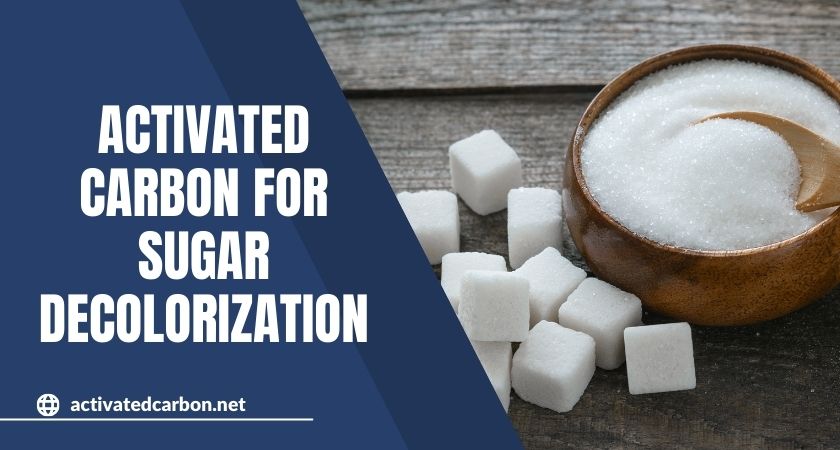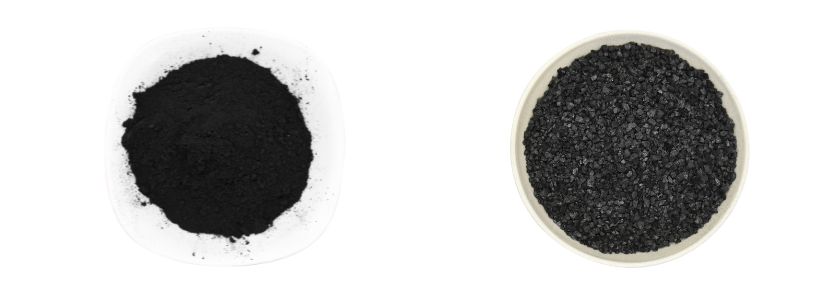
Activated carbon is one of the most common means used in the sugar production process for decolorization.
In the sugar production process, untreated sugar solutions contain various impurities such as proteins, pigments, and compounds with unpleasant odors, which can significantly affect the flavor and quality of the final sugar product. Therefore, the porous structure of activated carbon is utilized to efficiently adsorb and remove these impurities.
In the food and beverage industry, activated carbon stands out as one of the most efficient substances for decolorization. The following content will share the advantages and applications of activated carbon in the field of sugar decolorization.
The Importance of Sugar

Sugar holds a crucial position in all consumed foods worldwide. Sucrose is mostly derived from sugarcane and sugar beets. All sugars can be broadly categorized into raw sugar and refined sugar.
- Refined Sugar: About 75% of refined sugar is derived from sugarcane and is obtained by refining raw sugar.
- Raw Sugar: This type of sugar comes directly from sugarcane but cannot be used directly and is typically brown. Decolorization treatment is required before use.
Sugar Decolorization Methods
Understanding the importance of sugar and the associated sugar production methods is essential.
In the sugar industry, the main methods for decolorization have been activated carbon decolorization and ion exchange resin decolorization. The following will provide a detailed introduction to these two methods.
Activated Carbon Decolorization Method
Activated carbon possesses a large number of porous structures, allowing it to efficiently adsorb pigments and impurities in the solution. It exhibits a certain adsorption capacity for various types of pigments, and compared to the ion exchange resin method, activated carbon has lower processing costs, making it a cost-effective method.
Ion Exchange Resin Method
Ion exchange resin is a type of polymer compound with a mesh-like structure containing functional groups with opposite charges. It can exchange ions with the external environment carrying ions of the same charge. In sugar production, most pigments have a negative charge and can undergo exchange with anion resins for sugar decolorization.
However, the preparation and regeneration processes of ion exchange resins are relatively complex, leading to higher operating costs.
Do you plan to purchase activated carbon?
Advantages of Activated Carbon for Sugar

Activated carbon is a porous material with a high surface area and abundant pores, giving it strong adsorption capabilities to capture compounds in gases or liquids.
Its pore size ranges from 1.5 nm to 5 µm, with micropores below 2 nm, macropores above 50 nm, and mesopores between 2-50 nm. It is these well-developed pore structures that contribute to the excellent decolorization performance of activated carbon. It efficiently removes pigments and impurities from syrup, making the color of the syrup purer and providing a superior foundation for subsequent processes.
Different manufacturing methods of activated carbon produce materials suitable for different purposes. In sugar decolorization, the most suitable activated carbon is wood-based powdered charcoal and coal-based granular activated charcoal.
So, what substances can activated carbon be removed in the sugar production process? Please continue reading to discover the answer.
What Can Activated Carbon Remove?
Using activated carbon to treat sugar solutions can increase the liquid surface tension, reduce viscosity, decrease foam during evaporation, advance crystallization speed, and improve the crystallization of edible sugar. The unique porous structure of activated carbon can adsorb many pigments and impurities. Here are some common adsorbed substances:
Do you plan to purchase activated carbon?
How to Choose Activated Carbon

For sugar decolorization purposes, the color value of the sugar syrup is an important indicator of the degree of decolorization. The larger the color value, the better the adsorption effect and the stronger the decolorization ability of activated carbon.
In sugar decolorization, Zhulin activated carbon provides specialized activated carbon for decolorization. This type of activated carbon is made from high-quality wood chips and high-quality bituminous coal. It features well-developed medium to large pores, high methylene blue, low ash content, low floating rate, strong adsorption capacity, and good pollution interception ability. As a leader in the Chinese activated carbon industry, we offer high-quality, customized activated carbon products to meet various sugar decolorization requirements.
Below are some of our product parameters for reference.
| Specification | Size | Molasses Number | Caramel Decoloration | MB mg/g | PH | Iron Fe+ % | Ash % | Moisture Content % | Iodine No. mg/g |
|---|---|---|---|---|---|---|---|---|---|
| Wood Powder Activated Carbon | 100mesh, 200mesh, 300mesh | 150-180 | 100-130 | 150-280 | 3-11 | 0.02-0.05 | ≤5 | ≤10 | 300-1050 |
| Coal Agglomerated Granular Charcoal | 12×40 | 200-240 | 82-90 | 160-230 | 5-7.5 | 0.01-0.03 | ≤8 | ≤10 | 900-1000 |
Do you plan to purchase activated carbon?
Final Thoughts
Activated carbon plays a crucial role in sugar decolorization, contributing significantly to the entire industry’s sustainable development. The decolorization effect of activated carbon is constrained by various factors. Therefore, in practical production applications, you need to consider multiple factors to maximize the advantages of activated carbon.
If you have any thoughts or questions, please let us know, and let’s embark on a wonderful collaboration together.